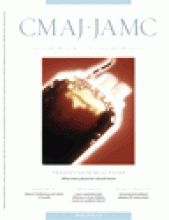- © 2007 Canadian Medical Association
Abstract
Background: Based on regional and anecdotal reports, there is concern that vitamin D–deficiency rickets is persistent in Canada despite guidelines for its prevention. We sought to determine the incidence and clinical characteristics of vitamin D–deficiency rickets among children living in Canada.
Methods: A total of 2325 Canadian pediatricians were surveyed monthly from July 1, 2002, to June 30, 2004, through the Canadian Paediatric Surveillance Program to determine the incidence, geographic distribution and clinical profiles of confirmed cases of vitamin D-deficiency rickets. We calculated incidence rates based on the number of confirmed cases over the product of the length of the study period (2 years) and the estimates of the population by age group.
Results: There were 104 confirmed cases of vitamin D– deficiency rickets during the study period. The overall annual incidence rate was 2.9 cases per 100 000. The incidence rates were highest among children residing in the the north (Yukon Territory, Northwest Territories and Nunavut). The mean age at diagnosis was 1.4 years (standard deviation [SD] 0.9, min–max 2 weeks–6.3 years). Sixty-eight children (65%) had lived in urban areas most of their lives, and 57 (55%) of the cases were identified in Ontario. Ninety-two (89%) of the children had intermediate or darker skin. Ninety-eight (94%) had been breast-fed, and 3 children (2.9%) had been fed standard infant formula. None of the breast-fed infants had received vitamin D supplementation according to current guidelines (400 IU/d). Maternal risk factors included limited sun exposure and a lack of vitamin D from diet or supplements during pregnancy and lactation. The majority of children showed clinically important morbidity at diagnosis, including hypocalcemic seizures (20 cases, 19%).
Interpretation: Vitamin D–deficiency rickets is persistent in Canada, particularly among children who reside in the north and among infants with darker skin who are breast-fed without appropriate vitamin D supplementation. Since there were no reported cases of breast-fed children having received regular vitamin D (400 IU/d) from birth who developed rickets, the current guidelines for rickets prevention can be effective but are not being consistently implemented. The exception appears to be infants, including those fed standard infant formula, born to mothers with a profound vitamin D deficiency, in which case the current guidelines may not be adequate to rescue infants from the vitamin D-deficient state.











